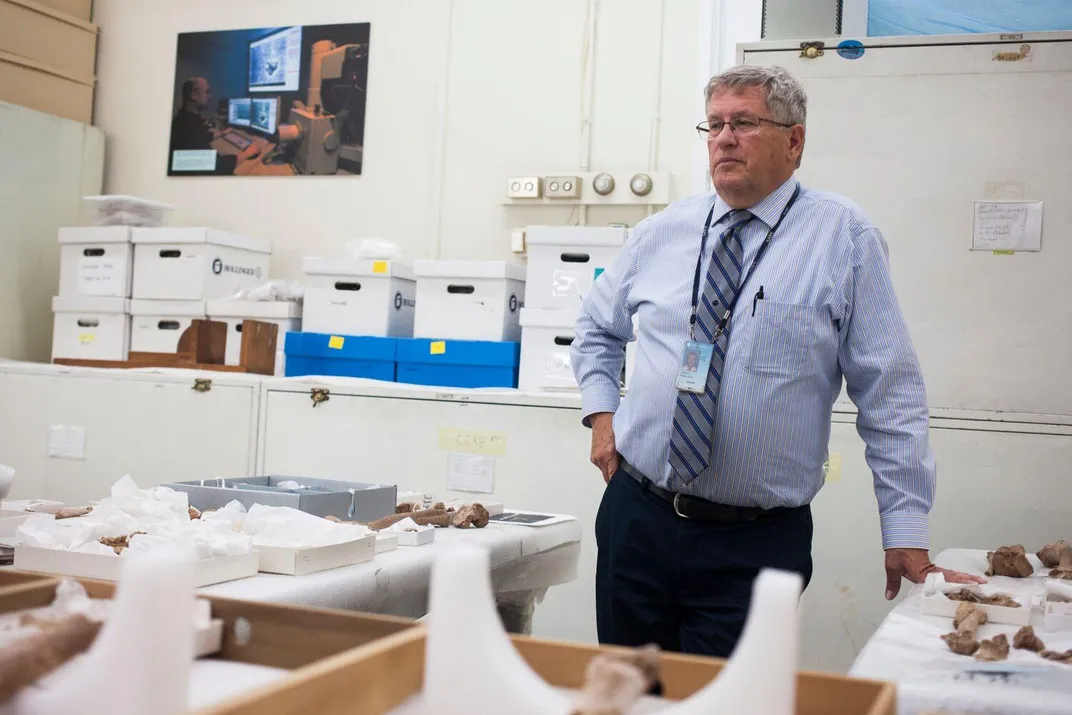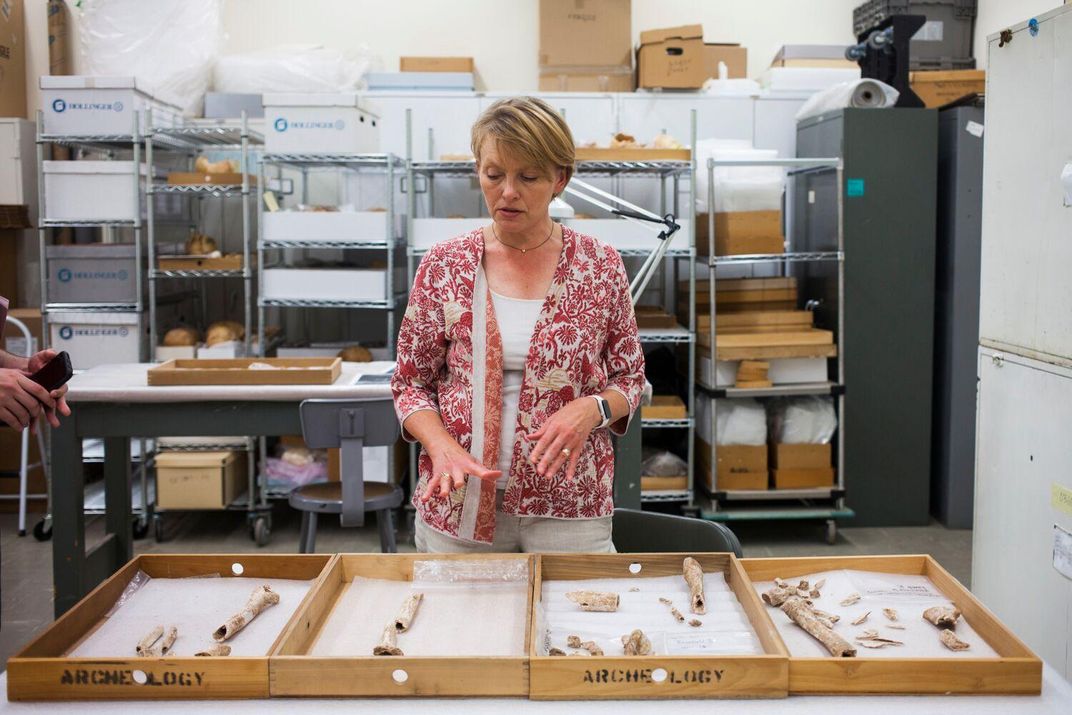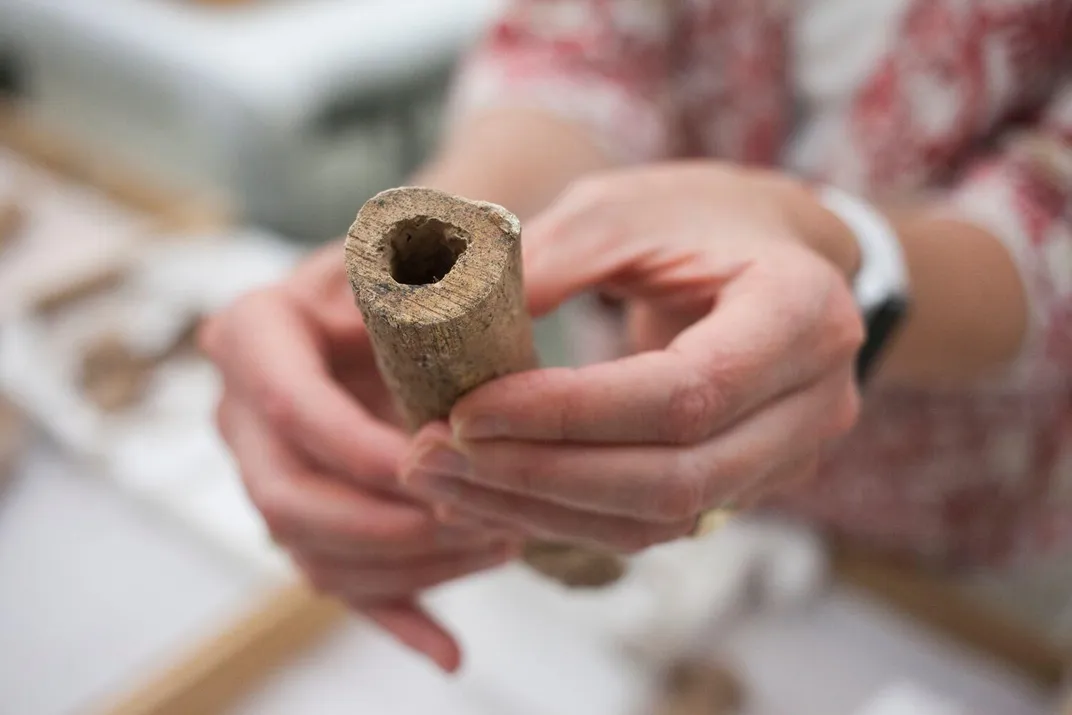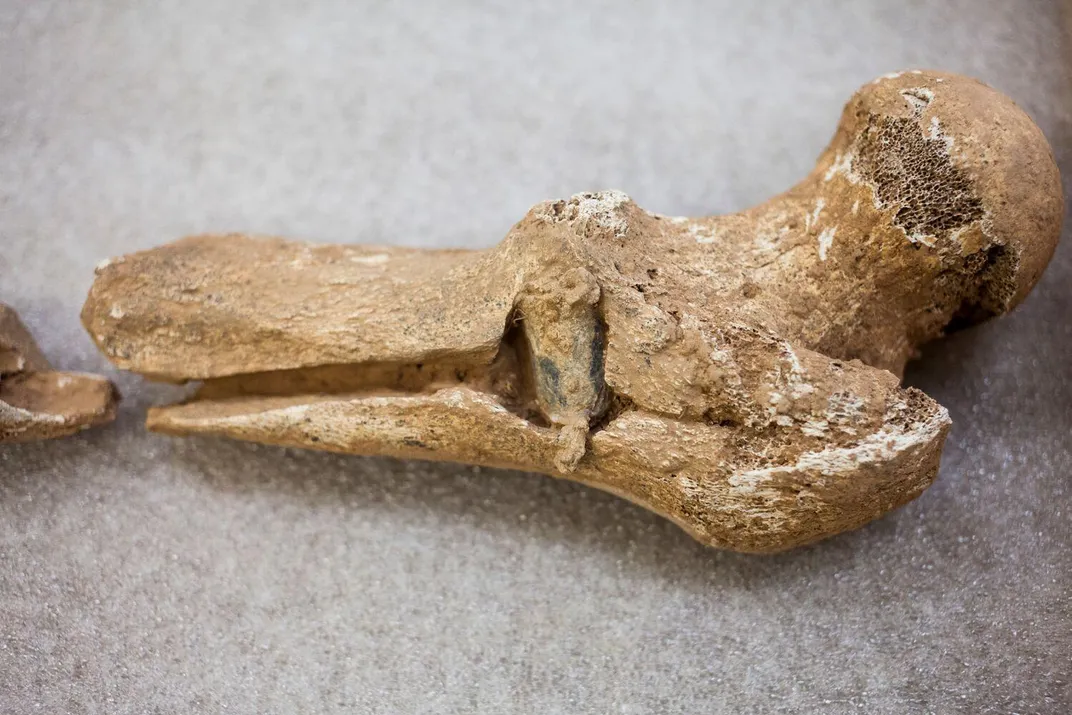Newly Unearthed Civil War Bones Speak Silently to the Grim Aftermath of Battle
What the amputated limbs and full skeletons of a Manassas burial pit tell us about wartime surgical practices
:focal(1500x1086:1501x1087)/https://tf-cmsv2-smithsonianmag-media.s3.amazonaws.com/filer/f0/ad/f0ad00dc-6d3e-433b-8cfb-ab7555e957b8/bull5.jpg)
Perhaps no feeling was more horrifying to a soldier in the Civil War than the realization deep into a charge against the enemy that the assault was doomed. Such was the case for the scores of Union men who surged toward Stonewall Jackson’s forces at the Second Battle of Bull Run in August of 1862. With Jackson’s men dug in along a railroad grade, the Union foot soldiers were literally fighting an uphill battle. The distance they had to traverse proved too great, and the enemy’s rifle muskets too accurate, for success to be feasible. Chaotically and desperately, they turned tail as unrelenting gunfire continued to cut them down.
When the shooting was over, dead and wounded Yankee troops littered the approach. Confederate losses were heavy as well, but Jackson’s men had held their ground.
The next day, Union Maj. Gen. John Pope followed up with another ill-fated assault on Jackson’s position, and his misreading of a tactical retreat of several Rebel units at Groveton caused troops under the command of Union Gen. Fitz John Porter to fall prey to an artillery trap. As Confederates under James Longstreet launched a massive 25,000-man counterattack, Union forces had no choice but to evacuate as quickly as possible.
This result was in many ways a replay of the First Battle of Bull Run, another high-casualty Confederate victory that had forced a hasty Union retreat from the same location just 13 months earlier. Second Bull Run was a far bloodier loss for the Union, though, notwithstanding some astute rearguard tactics during the bluecoats’ escape.
Today, the battlefield near Manassas, Virginia is a protected site under the purview of the National Park Service. Site policy is to let lie the countless bones swallowed by the land—the goal of park personnel is to preserve the region, not disrupt it. But in late 2015, in the process of clearing a narrow trench for a utility project, personnel inadvertently unearthed what would prove to be an archaeological treasure trove.

The first finds were miscellaneous bone fragments, which park-affiliated experts in Maryland took to be human. To confirm this, they enlisted the help of longtime Smithsonian collaborator Doug Owsley, lead physical anthropologist at the National Museum of Natural History. Once it was settled that these were indeed human bones, Owsley and his colleague, physical and forensic anthropologist Kari Bruwelheide, painstakingly reassembled the bones in their lab within the museum on the National Mall in Washington, D.C.
One bone in particular, an incomplete distal left femur found in more than ten separate pieces, leapt out at them. Cleanly sawn, the find piqued the pair’s curiosity. “Knowing this is a Civil War battlefield,” Bruwelheide says, “the first thing we think about is an amputation.”
Owsley and Bruwelheide soon had much more to go on—additional scouting in the area of the first find turned up a human-excavated pit, dug a single foot deep, containing seven additional limbs and two virtually complete skeletons (one was missing its skull, likely due to farming activity during the years before the site became a National Park). Owsley and Bruwelheide set about doing what they do best: piecing together the story behind the bones.
“First, we had to determine whether this was First or Second Manassas,” Owsley says. “There were two battles fought on this property.” To help them assess the evidence, Owsley and Bruwelheide corresponded with park superintendent Brandon Bies. The location of the pit suggested the second battle, but it was two subtle aspects of the bones within that led Bies and his fellow park historians to reach an ironclad conclusion.
For one, one of the skeletons was found with small metallic discs clustered near its shoulder. Bies and his colleagues confirmed that these were buttons—and not just any buttons, but buttons characteristic of an official Union sack coat.

At the time of the First Battle of Bull Run in 1861, troop uniforms were provincial and varied significantly. Union sack coats similar to the one that this soldier had been buried in were only in common use during the second battle. Even more persuasive evidence came in the form of a severely fractured femur, in which a bullet was lodged.
Bies and his team could identify the source of the deformed bullet as an Enfield rifle musket. “That’s a powerful clue,” Owsley explains, “because the Confederates are using Enfields at Second Manassas.” The British-imported firearms would not have been available to the Rebels in time for the first battle.
Owsley and Bruwelheide confirmed that that the bones belonged definitively to Union men rather than Confederates with sophisticated isotopic analysis. By linking the chemical constituency of the bones with diet, the Smithsonian researchers were able to make some very impressive deductions. “Oxygen isotopes tell us about their drinking water,” Bruwelheide explains. “And that varies by region, so we were able to place these men in the northern states.”
Even after all of this crafty detective work, though, much of the larger mystery remained. Finding two skeletons in the midst of a smattering of isolated limbs was completely unprecedented. “That had never been documented before,” Bruwelheide says.
The batch of limbs from the pit bore the same smooth sawing of the stray femur Owsley and Bruwelheide had rebuilt before its discovery. They soon concluded concretely that these were amputated parts. Owsley explains that a surgeon—highly skilled, judging by the precision of the cuts (which Owsley and Bruwelheide inspected in microscopic detail)—would first have run a scalpel around the circumference of the leg at the chosen spot, cutting through tendons to reach the bone. Then, after peeling back the intervening tissue, he would have taken a bone saw to the ruined bone, slicing clean through, and often very high up the limb.

In dialogue with Bies at the Manassas site, and with the aid of military medical logs and other primary sources, Owsley and Bruwelheide pinned down what likely happened. Following the Second Battle of Bull Run, Union battlefield surgeons would have been admitted to the grounds by Confederate gatekeepers, with all but their most rudimentary supplies confiscated. There at the site, surgeons would have hastily operated on soldiers who had been baking in the sun and soaking in the rain without food for days on end. “Some of these amputations were probably done in less than ten minutes,” Owsley says.
The exactitude of the amputations under the circumstances was striking. Forensically, Owsley says, “you can read how the doctor’s positioned and how he’s cutting through the bone, and what pace he’s using in different locations. These were done by an experienced surgeon. This was not novice work.”
Owsley and Bruwelheide even have a guess as to who the surgeon responsible for these discarded limbs might have been: a cool professional named Benjamin Howard, who went on to tend to the wounded of Antietam and the Battle of the Wilderness. “We know Howard signed off on most of the leg amputations” in the relevant part of the Manassas battleground, Owsley says, and “we can track at one of the depot stations that he did at least 15 leg amputations.”
But what of the two full skeletons? Why were those men buried with the severed limbs of their brothers in arms? Owsley says the answer is simple. In the early days of the war, before the advent of sophisticated triage, the categories battlefield surgeons relied on were simple: those worth trying to save by amputation, and those beyond saving. The two men left in the shallow grave with the remains of their peers fell into the latter classification. (Bies notes that the Union men who died in battle were simply left on the field, though almost all were eventually afforded burials of their own.)

To illustrate this theory, Owsley reconstructs the story of the man with the Enfield slug in his femur—a man who was between the ages of 25 and 29—in harrowing detail. “He’s retreating, withdrawing,” Owsley says, based on his knowledge of the ballistics of the bullet and the damage it caused. “He’s shot in his buttocks area, really high,” as he’s fleeing the Confederates at his back. But this man’s is no ordinary wound. Rather, judging by the deformation of the conical, rifled bullet, the slug went in at an angle, embedding itself sideways in the man’s upper femur and precipitating a nasty longitudinal fracture down the bone’s length. (The deflection “could have been because of the cartridge belt he was wearing,” Owsley theorizes.) When the soldier’s foot came down, the situation only worsened, with the bone snapping completely and bits of it splintering off inside his leg. “This is just so difficult to treat,” says Owsley.
No buttons suggestive of trousers were found with the skeleton, Owsley continues. “So what probably happened is, he’s still alive, and the surgeon had the pants cut off. They looked at this and said, ‘Oh, buddy,’ and just set him aside.” Amputation would have been a no-go: the wound was too high and too messy. “They triaged him out and said, ‘Put him under that shade tree.’”
Bies says the complete skeletons of the two men will be reinterred in Arlington National Cemetery in recognition of their service and sacrifice. He is eager to tell the story of the skeletons and amputated limbs formally on the Manassas grounds for visitors.
These latest specimens and narratives now have a place in Owsley’s vast archaeological database, which he has been building upon for decades with cases ranging from early America to the modern day. “We’re looking at 400 years of American history,” he says—history that’s “not necessarily recorded in the history books. It’s recorded in the bones.”
Correction 6/22/18: A previous version of this article stated that First Bull Run was a deadlier defeat for the Union than Second. This is incorrect. In fact, Second Bull Run claimed the lives of three to four times as many Union men as its predecessor.
/https://tf-cmsv2-smithsonianmag-media.s3.amazonaws.com/accounts/headshot/DSC_02399_copy.jpg)
/https://tf-cmsv2-smithsonianmag-media.s3.amazonaws.com/accounts/headshot/DSC_02399_copy.jpg)